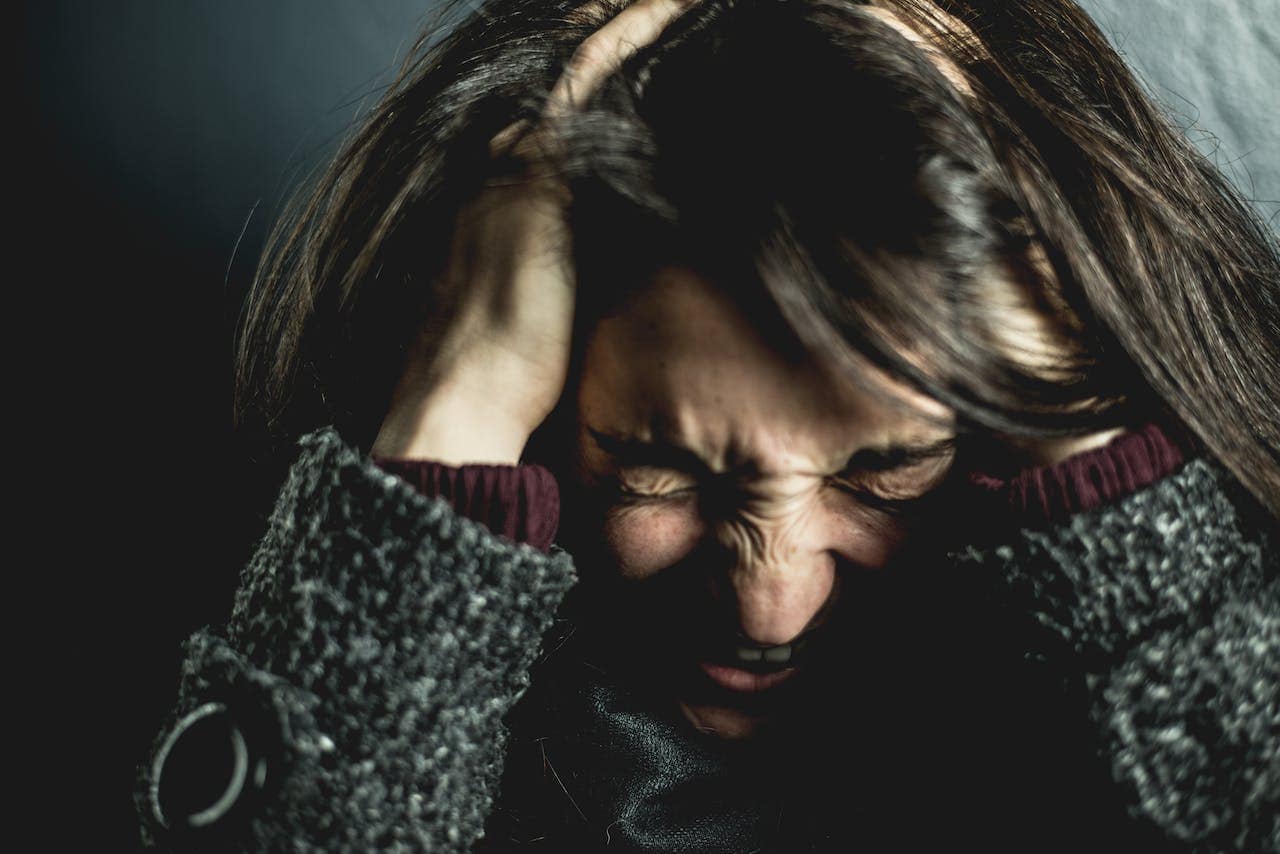Anxiety disorders affect millions of people worldwide, impacting their daily lives and overall well-being. Fortunately, therapy has emerged as a source of hope, providing effective strategies to manage and alleviate the debilitating symptoms associated with various anxiety disorders. Let’s explore the different types of anxiety disorders, the crucial role of mental health professionals, the diverse therapies used in treatment, and what individuals can expect from therapy.
Understanding Anxiety Disorders
At its core, an anxiety disorder is a condition characterized by an overwhelming and disproportionate response to situations that may not necessarily present an immediate threat. This response goes beyond instincts and reactions, evolving into a chronic condition that can persist for months or even years if left unaddressed. Anxiety disorders can manifest in various forms, each with its unique features but all rooted in the overarching theme of excessive fear and worry.
What Are The Different Types Of Anxiety Disorder?
Understanding the nuanced distinctions between different types of anxiety disorders is crucial for recognizing the signs in oneself or others and seeking appropriate treatment. Here, we delve deeper into the various types of anxiety disorders, shedding light on their unique characteristics and the challenges they present.
Generalized Anxiety Disorder (GAD)
Generalized Anxiety Disorder is perhaps one of the most pervasive forms of anxiety, distinguished by its non-specific, excessive worry over everyday occurrences and events. Individuals with GAD find themselves in a constant state of heightened anxiety, even in the absence of apparent triggers. This constant worry is not just fleeting; it’s a persistent shadow that looms over daily activities, often without a pause.
The physical manifestations of GAD are equally taxing, with muscle tension, restlessness, and an overarching sense of being ‘on edge’ being commonplace. The relentless nature of GAD can lead to significant disruptions in sleep patterns, concentration, and the ability to relax, essentially trapping individuals in a cycle of worry and discomfort that is challenging to break free from.
Social Anxiety Disorder
Social Anxiety Disorder transcends mere shyness. It is an intense, persistent fear of being watched, judged, or negatively evaluated in a social or performance situation. This fear is so overpowering that it leads to avoidance behaviors, steering clear of any interaction that might trigger anxiety. The ramifications extend far into personal and professional realms, where making friends, maintaining relationships, or advancing in careers becomes a monumental task.
For those grappling with social anxiety, everyday situations like starting a conversation, attending social gatherings, or even eating in front of others can seem daunting. The disorder can catalyze a sense of isolation, as the fear of judgment and rejection becomes a barrier to forming meaningful connections with others.
Panic Disorder
Panic Disorder is marked by sudden and intense waves of fear that culminate in panic attacks—acute episodes of overwhelming anxiety and physical symptoms that mimic those of a heart attack. These symptoms include palpitations, chest pain, dizziness, and shortness of breath, among others. The unpredictability of these attacks contributes to a persistent worry about when the next episode will strike, often leading to significant behavioral changes in an attempt to avoid future attacks.
The cycle of fear, anticipation, and avoidance can severely limit individuals’ lives, affecting their ability to work, socialize, and even carry out everyday tasks. The fear of experiencing a panic attack, especially in a public setting, can be debilitating, fostering avoidance behaviors that further isolate the individual.
Separation Anxiety Disorder
Often misconstrued as a condition only affecting children, Separation Anxiety Disorder can indeed persist into adulthood. It is characterized by excessive anxiety concerning separation from home or from those to whom the individual is attached. This fear surpasses what might be considered normal at a certain developmental stage and can impede an individual’s ability to function independently.
Adults with separation anxiety may experience extreme homesickness, difficulty leaving loved ones even for short periods, and a preoccupation with the safety of those they are attached to. This can manifest in reluctance or refusal to go to work, travel, or engage in activities that require separation, leading to strained relationships and hindered personal growth and professional development.
What Is The Role Of Mental health professionals In Treating Anxiety?
Mental health professionals play a pivotal role in diagnosing and treating anxiety disorders. Psychiatrists, psychologists, and licensed therapists collaborate to provide comprehensive care. They employ evidence-based interventions to address the psychological and physical symptoms associated with anxiety disorders.
What Types Of Therapy Are Used In The Treatment Of Anxiety?

Anxiety disorders, characterized by persistent and excessive worry, affect millions of individuals worldwide, significantly impacting their mental health and daily functioning. Fortunately, various therapeutic approaches have been developed and refined over the years to treat anxiety disorders effectively. These therapies are tailored to address the wide spectrum of anxiety symptoms, from the pervasive worry characteristic of generalized anxiety disorder to the acute panic associated with panic disorder. Understanding the different types of therapy available is crucial for individuals seeking relief from anxiety and for professionals aiming to provide the most effective treatment.
Cognitive Behavioral Therapy (CBT)
Cognitive Behavioral Therapy stands at the forefront of treating anxiety disorders, including generalized anxiety disorder, social anxiety disorder, and panic disorder. CBT operates on the principle that negative patterns of thought about the self and the world contribute to anxiety. By changing these thought patterns, individuals can alter how they feel. CBT involves identifying and challenging distorted perceptions and irrational beliefs and gradually facing situations that cause anxiety, thereby reducing anxiety symptoms.
Exposure Therapy
A subset of CBT, exposure therapy, is particularly effective for treating specific phobias, social anxiety disorder, and panic disorder. This approach involves gradual and controlled exposure to the feared object, situation, or activity, to reduce the fear response. Over time, exposure therapy helps desensitize individuals to their anxiety triggers, significantly reducing the power these triggers have over their emotional state.
Interpersonal Therapy (IPT)
Interpersonal Therapy focuses on the interpersonal relationships and social context of the individual. It posits that anxiety symptoms can be alleviated by improving communication patterns, enhancing social skills, and resolving interpersonal conflicts. IPT is particularly useful for individuals whose anxiety disorder, such as generalized anxiety disorder or social anxiety disorder, is closely linked to their relationships and social interactions.
Cognitive Therapy
Cognitive Therapy zeroes in on the modification of distorted thinking and dysfunctional beliefs that fuel anxiety disorders. By identifying and challenging these negative thought patterns, individuals can develop a more balanced and realistic outlook, which can significantly alleviate anxiety symptoms. Cognitive therapy is widely used in treating generalized anxiety disorder, social anxiety disorder, and panic disorder, providing a solid foundation for overcoming the cognitive aspects of anxiety.
Mindfulness-Based Therapies
Mindfulness-Based Stress Reduction (MBSR) and other mindfulness-based therapies have gained prominence in treating anxiety disorders. These approaches encourage individuals to focus on the present moment, acknowledging and accepting their thoughts and feelings without judgment. This mindfulness practice helps break the cycle of worry and rumination characteristic of generalized anxiety disorder and other anxiety disorders, promoting a state of calm and reducing anxiety symptoms.
Dialectical Behavior Therapy (DBT)
Originally developed to treat borderline personality disorder, DBT has been adapted for treating anxiety disorders, including generalized anxiety disorder and panic disorder. DBT emphasizes developing coping skills to manage stress, regulate emotions, and improve relationships. Through its core components—mindfulness, distress tolerance, emotional regulation, and interpersonal effectiveness—DBT equips individuals with the tools to navigate anxiety-provoking situations more effectively.
Final Thoughts
The journey through therapy for anxiety disorders is transformative, offering a beacon of hope to those trapped by the relentless grip of anxiety. Therapy, in its various forms, does more than treat symptoms; it empowers individuals with the tools and insights necessary to reclaim their lives from anxiety’s shadows.
If you or a loved one is battling anxiety, Nuvista Mental Health is here to help. Our holistic approach to treatment combines the latest in therapeutic techniques with unwavering support, guiding you every step of the way toward a life not defined by anxiety. Let us embark on this journey together, towards a future where anxiety no longer holds the reins. Take the first step towards reclaiming your peace of mind.
Contact us today, and discover how we can help you or your loved one find the path to recovery.



